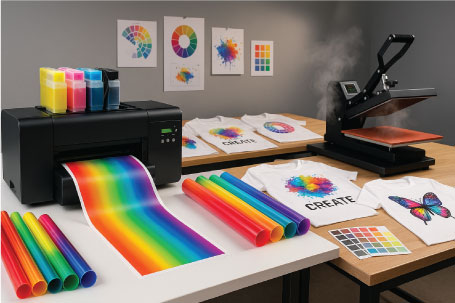How DTF Transfers Are Transforming the Market?
In the ever-evolving world of custom printing, trends and technologies rise and fall, but some innovations leave an undeniable mark on the industry. Direct-to-Film (DTF) transfer printing is one of those breakthroughs — a printing method that’s quickly becoming a go-to choice for businesses, hobbyists, and large-scale production houses alike.
Whether you run a custom apparel shop, create personalized merchandise, or print for retail brands, understanding the impact of DTF transfers on the market is crucial to staying competitive. In this blog, we’ll explore how DTF printing is shaping the custom printing industry, why it’s disrupting traditional methods, and what it means for the future of custom apparel and merchandise.
What Is DTF Transfer Printing?
Before we dive into the market impact, let’s clarify what DTF transfer printing actually is.
Direct-to-Film (DTF) transfer is a process where designs are printed onto a special PET film using water-based DTF inks, covered with a heat-melt adhesive powder, and then cured. Once ready, the film can be heat-pressed onto a wide variety of materials — cotton, polyester, blends, leather, nylon, and more — with vibrant, long-lasting results.
The Key Steps of DTF Transfer Printing:
- Design Creation – Your artwork is created digitally using graphic design software.
- Printing on Film – The design is printed in reverse onto PET film with specialized DTF inks.
- Powder Application – A hot-melt powder adhesive is evenly applied to the wet ink.
- Curing – The powder is melted and bonded to the ink using a curing oven or heat press.
- Heat Pressing – The printed film is placed on the garment and heat-pressed to transfer the design.
This process delivers durable, full-color prints with excellent stretch and wash resistance, making it a versatile choice for the custom printing market.
DTF Transfers vs. Other Printing Methods
The rise of DTF transfers is largely due to how they outperform — or at least rival — other popular printing methods in flexibility, cost-effectiveness, and quality.
Here’s a quick comparison:
| Printing Method | Pros | Cons |
| DTF Transfer | Works on most fabrics, vibrant colors, durable, cost-effective for small or large runs | Requires curing equipment and heat press |
| DTG (Direct-to-Garment) | High detail, great for small batches, soft feel | Limited to cotton-heavy fabrics, high maintenance |
| Screen Printing | Excellent for bulk orders, long-lasting | Not cost-effective for small runs, limited design complexity |
| Sublimation | Bright colors, no texture | Only works on polyester or poly-coated surfaces |
What sets DTF printing apart is its ability to deliver full-color prints on virtually any fabric type, without the need for pre-treatment, making it more versatile and accessible for small and large-scale printing operations alike.
The Growing Popularity of DTF Transfers in the Custom Printing Market
The custom printing industry has seen major shifts in the last five years, with
technology playing a big role in these changes. This surge is driven by several key factors:
1. Lower Production Costs
DTF transfers eliminate the need for expensive pre-treatment chemicals, reduce ink waste, and allow for short-run production without the high setup costs of screen printing.
2. Better for Small & Large Orders
Because DTF transfers can be printed ahead of time and stored, they make it easier for businesses to fulfill both single custom orders and bulk corporate or retail orders.
3. Increased Creative Freedom
DTF transfers handle fine details, gradients, and vibrant color combinations without losing print quality, enabling brands to create more unique and intricate designs.
4. Durability That Satisfies Customers
A key selling point for any printed apparel is how well it lasts. DTF prints resist cracking, peeling, and fading, even after multiple washes.
Economic Impact on the Custom Printing Market
DTF transfer printing has had a significant effect on the business models of custom printing companies. Here’s how it’s changing the economics:
1. Lower Barrier to Entry
With DTF printers and supplies becoming more affordable, new businesses can enter the market without massive upfront investments.
2. Faster Turnaround Times
Customers today demand same-day or next-day service for custom apparel. DTF transfers allow print shops to fulfill this expectation without compromising quality.
3. Stock-and-Ship Model
Because DTF transfers can be stored for months, companies can print designs in advance and heat-press them as orders come in. This reduces wasted stock and improves inventory management.
4. Increased Profit Margins
Lower production costs combined with premium pricing for vibrant, durable prints mean higher margins for print shops and resellers.
Environmental Impact of DTF Transfers
The custom printing industry is under increasing pressure to adopt eco-friendlier practices. While no printing method is 100% green, DTF printing offers some environmental advantages over alternatives:
- Less Water Usage – Unlike screen printing, which requires significant water for cleaning screens, DTF has minimal water waste.
- Reduced Waste – Digital printing reduces the need for large batches, preventing overproduction.
- Eco-Friendly Inks – Many DTF inks are water-based, reducing harmful emissions.
That said, sustainability-conscious print shops are now combining DTF technology with recycled garments, organic fabrics, and eco-friendly packaging to appeal to environmentally aware consumers.
How DTF Transfers Are Disrupting Traditional Printing Businesses
The DTF boom is a wake-up call for traditional printing businesses still relying solely on methods like screen printing or DTG. While these older technologies still have their place, customer expectations have shifted toward flexibility, speed, and variety.
Key disruptions include:
- Reduced demand for large print runs — More customers want smaller batches or even one-off designs.
- Shift toward on-demand production — Retailers can avoid large inventory commitments by printing as orders come in.
- Increased competition — New entrants with DTF capabilities are able to compete effectively with established shops.
Opportunities for Businesses Using DTF Transfers
The beauty of DTF transfers lies not just in their capabilities but in the business opportunities they open up:
1. Expanding Product Range
From t-shirts and hoodies to tote bags, hats, and even leather jackets — DTF transfers can be applied to many surfaces, letting businesses diversify product offerings.
2. Partnering with Designers
Independent designers and artists can collaborate with print shops to create unique collections without committing to large print runs.
3. Selling Heat-Press-Ready Transfers
Shops can sell ready-to-press DTF transfers to DIY crafters, home businesses, or other print shops that lack printing equipment.
4. E-commerce Growth
DTF transfers make print-on-demand models easier to manage, especially for online stores selling niche designs worldwide.
Challenges of DTF Transfer Printing
Of course, no technology is without challenges. While DTF transfers are gaining popularity, they do come with considerations:
- Learning Curve – Understanding ink settings, curing times, and powder application takes practice.
- Initial Equipment Costs – While cheaper than some methods, high-quality DTF printers and curing systems still require investment.
- Maintenance Needs – Like any printing equipment, regular maintenance is essential to keep prints looking sharp.
- Quality Control – Poor handling or incorrect application can reduce print durability.
The Future of DTF Transfers in the Custom Printing Market
Looking ahead, DTF printing shows no signs of slowing down. Analysts expect continued growth in the custom printing market, driven by:
- Increased demand for personalized products.
- More eco-friendly ink and film options.
- Integration of AI-powered design tools to streamline custom order creation.
- Better automation for large-scale production.
As printing technology advances, we can expect DTF to become even faster, more efficient, and more sustainable — making it a dominant force in the industry for years to come.
Why DTF Transfers Are Here to Stay
The impact of DTF transfer printing on the custom printing market is undeniable. With unmatched versatility, cost-effectiveness, and design freedom, DTF is empowering both established print shops and newcomers to deliver high-quality, durable, and vibrant custom products.
For DTFSuperPrint.com, embracing and promoting DTF technology isn’t just about keeping up with trends — it’s about leading the charge in a printing revolution that gives customers exactly what they want: fast, flexible, and flawless custom prints.
Whether you’re a business owner, designer, or DIY creator, the message is clear: DTF transfers are the future of custom printing, and the future is already here.

